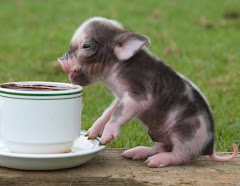In 1942, Pavel Friedman wrote “The Butterfly” from Terezin Concentration camp. The power of this twenty-one year old Jewish man’s words exemplifies the juxtaposition of hope and horror that the victims of the Holocaust experienced. I was exposed to this poem as a young girl when my Dad brought home “I Never Saw Another Butterfly”—a collection of children’s poems and drawings from Terezin between 1942-1944. His words moved me instantly: “The last, the very last, / so richly, brightly, dazzlingly yellow.” It wasn’t until my elementary school choir sang the words to music, however, that I fully realized the beauty and sadness in Friedman’s verses.
The kairos in which the poem was written makes it even more compelling. If these words were written by someone who did not experience a ghetto or concentration camp first-hand, they would not have the same powerful effect. The fact that Friedman was “penned up inside this ghetto” while he wrote these words also increases their effect. The combination of optimism and fear in his verses creates an extremely emotional dynamic which she wrote as a personal mantra—possibly not even meant to be read by anyone, let alone millions.
The genre of these words—a personal exploration of hope within captivity—allows the reader to have this very intimate view of a young man’s experience. This intimacy we get from Friedman enhances the power of his spiritual words. The form of a poem also helps develop her words since I believe that a different format would not evoke the same simple naivety and wisdom as her brief verses. His four verses vary in length and do not seem to follow any pattern but their rhythm is undeniable. His words undulate between hope and sadness creating a very emotional dynamic.
There is something about poetry that has the ability to emit such emotion in such a short work and that is definitely the case in “The Butterfly”. The first two verses vaguely describe the beauty of a butterfly but still manage to capture the reader’s attention. The third verse allows the reader to have a glimpse into the hope Pavel has within the ghetto and ends by telling the reader that the beauty he is speaking of is in fact, a butterfly. The final verse sadly kills all hope by stating that “That butterfly was the last one. / Butterflies don’t live here, in the ghetto”. The ending of this poem is so powerful since it confirms that Friedman’s world is truly void of any beauty and therefore void of any hope. Although he claims he sees the beauty in a dandelion—which symbolizes the same yellow of the butterfly—one must ultimately remember that it is a weed.
Friedman’s poem evokes the sadness of the Holocaust to the reader. He is clearly able to do this because of the form of his words. The symbolism of hope and beauty that he uses would not be as affective in another form like prose. The brevity of the work leaves the reader with chills and uncertainty—a similar emotion that Friedman undoubtedly felt.
Subscribe to:
Post Comments (Atom)

No comments:
Post a Comment